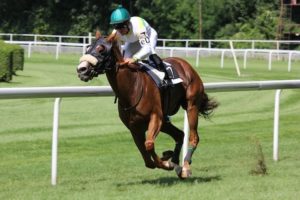How can you tell if a horse acts on soft going?
 The state of the ground, or going, on a racecourse is often a determining factor in where, when and how well racehorses run. Soft going is deep, moist and slightly muddy, thereby presenting a challenge that some horses relish, but others absolutely detest. However, there are several ways you can tell, or least make an educated guess, that a horse acts on soft going. In order of efficacy, they are its previous performances on the racecourse, its pedigree, its confirmation and gait and, last, but by no means least, the size of its feet!
The state of the ground, or going, on a racecourse is often a determining factor in where, when and how well racehorses run. Soft going is deep, moist and slightly muddy, thereby presenting a challenge that some horses relish, but others absolutely detest. However, there are several ways you can tell, or least make an educated guess, that a horse acts on soft going. In order of efficacy, they are its previous performances on the racecourse, its pedigree, its confirmation and gait and, last, but by no means least, the size of its feet!
If a horse has already raced, preferably more than once, on soft going, you can probably assess its going preference by reference to its previous form in, say, the ‘Racing Post’, or learned commentary, such as that provided by Timeform. If it hasn’t, you can only really speculate, but there are still one or two pointers that can help predict preference for one type of going or another.
Going preference tends to be inherent, so analysing the pedigree of the horse will reveal if it was sired by a stallion, such as Lope De Vega or Pivotal, whose progeny prefer soft ground. If you are able to see the horse in motion, concentrate on its knee action. Conventional wisdom suggests that horses with a high, rounded knee action naturally lift their feet up and out of the ground on each stride, so are more effective on soft going than those with a low, ‘daisy cutter’ action. Likewise, horses with larger, ‘soup plate’ hooves tend not to sink as far into soft going as those that don’t – think of a man wearing snowshoes – so waste less time and effort pulling their feet out of the ground.